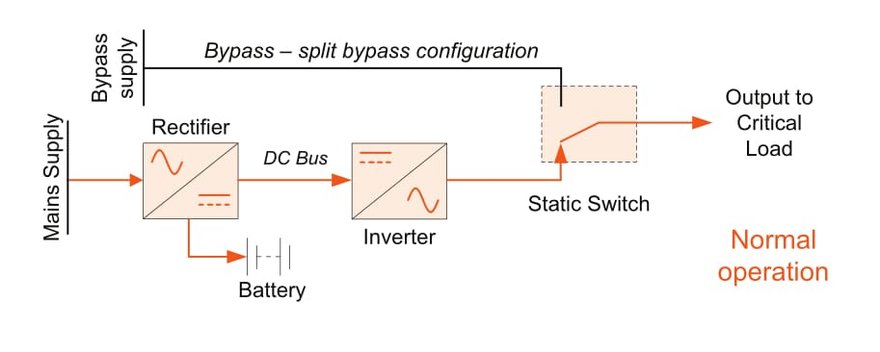UPS systems have become complex over time, which can make it hard to stay on top of terminology or concepts used. In this article series, Alan Luscombe, director at Uninterruptible Supplies Ltd, gives a short explanation of one term each week.
Most products you can buy offer opportunities to trade off cost against quality. For UPSs this choice relates to their topology; online, offline, or an offline variant known as line-interactive. Offline products are lower-cost, but only online types fully protect the critical load during both normal operation and mains failure conditions.
To understand the differences in topologies and their implications, we can compare offline and online designs as shown in Figs.1 and 2 respectively.
From Fig.1 we can see that in an offline design, raw mains reaches the critical load during normal operation. The load is accordingly exposed to any noise, spikes, sags, brownouts or other mains disturbances throughout most of its operational life. Any of these events could cause at least a loss of service, which is often unacceptable to an online business operation. Additionally, though, it could destroy data or even damage hardware.
Fig.2 shows how, by contrast, the incoming supply is fed through the UPS components – rectifier, charger and inverter power blocks – before reaching the load. These blocks are effective in filtering out mains supply aberrations before they reach the load, in addition to providing a well-regulated supply. If the mains does fail, switchover to the battery supply via the inverter is seamless and invisible to the load.
For these reasons, nearly all data centers use online UPS topologies, as any extra capital or operating costs are insignificant compared with the possible consequences of a mains supply problem reaching the load.



